
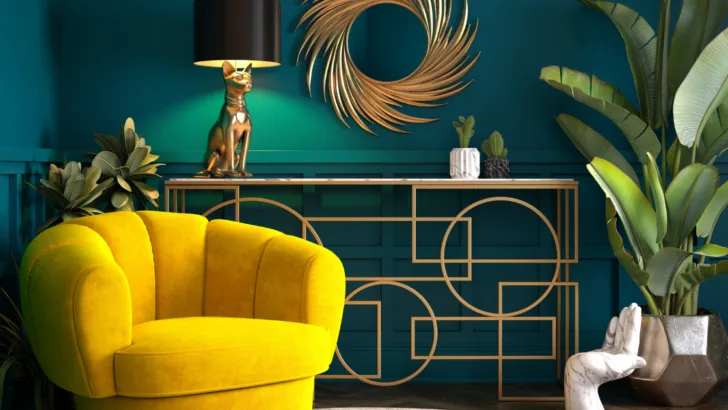
Elegant Melody Maison Art Deco Mirror.
Why is an Art Deco mirror popular and trending?
Art Deco mirrors have become increasingly popular and trending in recent years due to their unique and glamorous aesthetic. Art Deco is a design style that emerged in the 1920s and 1930s, characterized by bold geometric shapes, vibrant colors, and luxurious materials. Art Deco mirrors are typically large and ornate, featuring intricate designs and embellishments such as beveled edges, etched glass, and geometric patterns. They are often made with high-quality materials such as silver, bronze, or brass, adding to their opulent appeal.
In addition to their stunning visual appeal, Art Deco mirrors are also highly functional, serving as both decorative pieces and practical tools for reflecting light and creating the illusion of more space in a room. With their timeless elegance and versatility, it’s no wonder why Art Deco mirrors have become a popular choice for interior designers and homeowners looking to add a touch of glamour and sophistication to their spaces. Read on to explore why an Art Deco mirror would be an ideal addition to your living space!
Whilst we explore the reasons why you should invest in an Art Deco MIrror, why not take a read on our blog around Herringbone Laminate Flooring and Grey Herringbone Floor for your next house makeover project?
How has Art Deco come about?
Art Deco is a design style that emerged in the early 20th century, particularly in the years between World War I and World War II. It originated in Europe, particularly in France, and quickly spread around the world, becoming a dominant design style in the 1920s and 1930s.
The origins of Art Deco can be traced back to several different sources. One was the “Exposition Internationale des Arts Decoratifs et Industriels Modernes” held in Paris in 1925, which showcased a range of decorative arts and design styles. The exhibition featured a mix of traditional and modern styles, including Art Nouveau, Cubism, and Futurism, and helped to establish the Art Deco style as a dominant force in design.
Another influence on Art Deco was the discovery of ancient Egyptian art and design in the early 20th century, particularly after the excavation of King Tutankhamun’s tomb in 1922. The bold geometric shapes and stylized figures of ancient Egyptian art resonated with Art Deco designers, who incorporated these elements into their work.
The rapid development of industry and technology in the early 20th century also played a role in the emergence of Art Deco. The streamlined forms and use of new materials such as chrome and glass reflected the technological advancements of the era, while the emphasis on luxury and opulence reflected the growing prosperity and optimism of the time.
Overall, Art Deco was a reaction to the excesses of the previous Art Nouveau style and a celebration of modernity, glamour, and sophistication. Its influence can still be seen today in everything from architecture and fashion to furniture and graphic design.
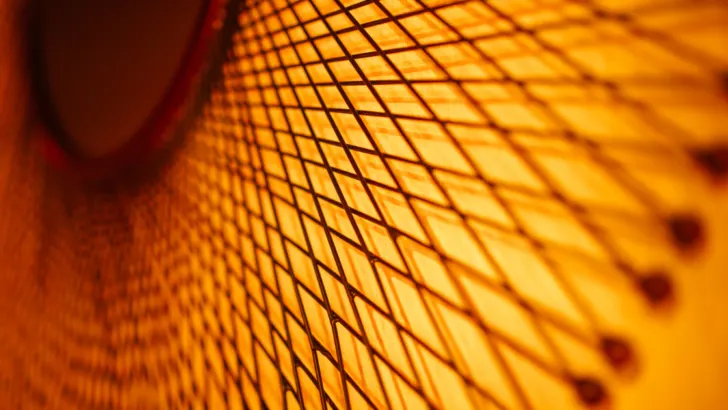
Elevate Your Space with Art Deco Mirror Elegance
What are the common features of Art Deco Mirror?
Art Deco mirrors are characterized by their bold geometric shapes, luxurious materials, and intricate designs. Here are some common features of Art Deco mirrors:
- Geometric shapes: Art Deco mirrors often feature bold geometric shapes such as rectangles, circles, and triangles. These shapes may be arranged in a symmetrical or asymmetrical pattern to create a visually striking design.
- Luxurious materials: Art Deco mirrors are often made with high-quality materials such as silver, bronze, or brass. These materials add to the opulent appeal of the mirror and create a sense of luxury.
- Beveled edges: Beveled edges are a common feature of Art Deco mirrors. These angled edges create a three-dimensional effect that enhances the mirror’s visual appeal and adds depth to the design.
- Etched glass: Etched glass is another common feature of Art Deco mirrors. Intricate designs and patterns are etched onto the surface of the glass, creating a unique and eye-catching design.
- Geometric patterns: Art Deco mirrors often feature intricate geometric patterns such as chevrons, sunbursts, and zigzags. These patterns may be created with the use of different materials such as wood or metal.
- Mirrored frames: Mirrored frames are a common feature of Art Deco mirrors. The frame itself may be made entirely of mirrored glass or may feature mirrored panels along with other materials such as metal or wood.
Overall, Art Deco mirrors are characterized by their bold, glamorous aesthetic and their use of high-quality materials and intricate designs.
Is Art Deco and Art Nouveau the same?
Art Deco and Art Nouveau are two distinct art styles that emerged during different periods and have different characteristics.
Art Nouveau, which emerged in the late 19th century, was characterized by flowing, organic shapes, intricate patterns, and a focus on natural forms such as flowers and plants. Art Nouveau was influenced by the Arts and Crafts movement and was seen as a reaction against the excesses of the Industrial Revolution.
In contrast, Art Deco emerged in the 1920s and 1930s and was characterized by bold geometric shapes, sleek lines, and a focus on industrial materials such as chrome and glass. Art Deco was a celebration of modernity and luxury and was seen as a reaction against the ornate, flowery style of Art Nouveau.
While there are some similarities between Art Nouveau and Art Deco, such as a focus on decorative arts and an interest in creating a total aesthetic experience, they are distinct styles with different characteristics and influences.
Did Art Deco or Art Nouveau come first?


Discover the Allure – Art Nouveau antique wall mirror.
Art Nouveau came first, emerging in the late 19th century, while Art Deco emerged in the 1920s and 1930s. Art Nouveau was a reaction against the excesses of the Industrial Revolution and was characterized by flowing, organic shapes and a focus on natural forms such as flowers and plants. Art Nouveau was influential in the decorative arts, architecture, and graphic design.
In contrast, Art Deco was a celebration of modernity and luxury and was characterized by bold geometric shapes and a focus on industrial materials such as chrome and glass. Art Deco was influenced by a range of artistic styles, including Art Nouveau, Cubism, and Futurism, and was dominant in design during the 1920s and 1930s.
While there are some similarities between Art Nouveau and Art Deco, such as a focus on decorative arts and an interest in creating a total aesthetic experience, they are distinct styles with different characteristics and influences.
Can you have an Art Deco Mirror with lights?
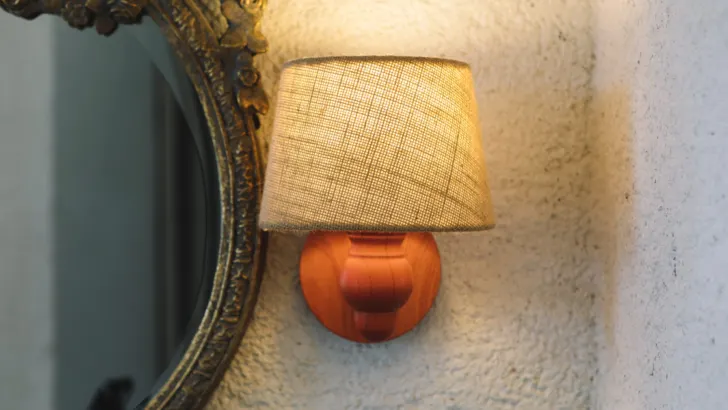
Timeless Art Deco Mirrors Where Style Meets Reflection
Yes, it is possible to have an Art Deco mirror with lights. Adding lights to an Art Deco mirror can enhance the overall design and make it more functional, particularly in spaces like bathrooms or dressing rooms where lighting is important.
There are several ways to incorporate lights into an Art Deco mirror design. One option is to have lights built into the mirror frame itself, either around the edges or embedded into the mirror surface. Another option is to add sconces or other light fixtures to the wall on either side of the mirror to provide additional illumination.
When designing an Art Deco mirror with lights, it is important to consider the overall aesthetic of the space and to choose lighting fixtures and materials that complement the mirror’s design. For example, an Art Deco mirror with a bronze frame might be paired with brass light fixtures for a cohesive look.
Can you have an Art Deco Mirror with colored glass?

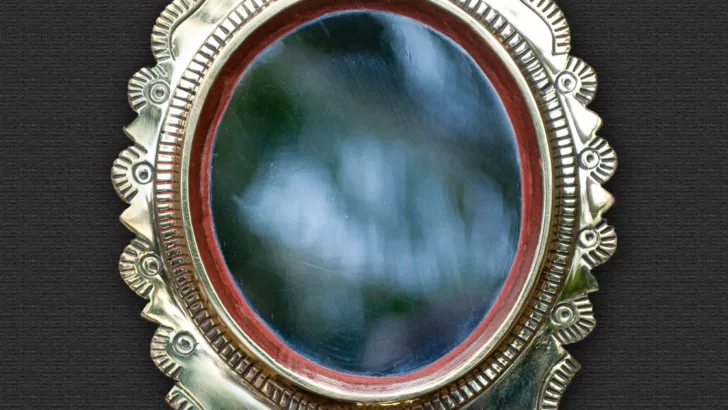
Discover the Allure of Art Deco Mirrors With Coloured Glass
Yes, it is possible to have an Art Deco mirror with colored glass. Art Deco mirrors often feature intricate designs and patterns, and adding colored glass can enhance these designs and create a unique visual effect.
One way to incorporate colored glass into an Art Deco mirror design is to use stained glass panels or inserts. Stained glass can be used to create intricate patterns or designs that are integrated into the mirror frame or surface. Another option is to use tinted or colored mirror glass, which can be used to create a unique and visually striking effect.
When designing an Art Deco mirror with colored glass, it is important to consider the overall aesthetic of the space and to choose glass colors and patterns that complement the mirror’s design. Bold, vibrant colors such as red, green, and blue were popular in Art Deco design and can be used to create a dramatic effect. Alternatively, more muted or subtle colors can be used for a more understated look.
Can you have an Art Deco Mirror with a cabinet?
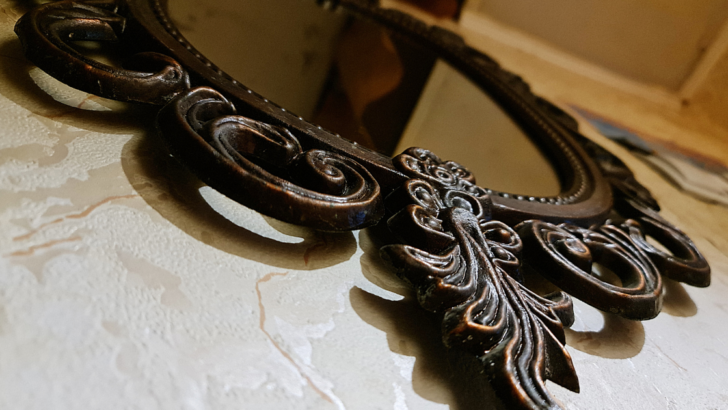
Mirror, Mirror on the Wall – Art Deco Reigns Supreme With Storage Solutions
Yes, it is possible to have an Art Deco mirror with a cabinet. In fact, Art Deco furniture often incorporates storage cabinets and other functional elements, making it a popular choice for spaces like bathrooms or dressing rooms where storage is important.
When designing an Art Deco mirror with a cabinet, it is important to consider the overall aesthetic of the space and to choose materials and finishes that complement the mirror’s design. Art Deco design often incorporated materials like chrome, glass, and lacquered wood, which can be used to create a sleek and sophisticated look.
One option for an Art Deco mirror with a cabinet is to have the cabinet built into the mirror frame itself, creating a seamless and integrated design. Alternatively, the cabinet can be a separate piece that is placed adjacent to the mirror, creating a complementary but distinct look.
Regardless of the specific design approach, an Art Deco mirror with a cabinet can be a functional and stylish addition to a variety of spaces.
Can you have an Art Deco Mirror anywhere around the house?

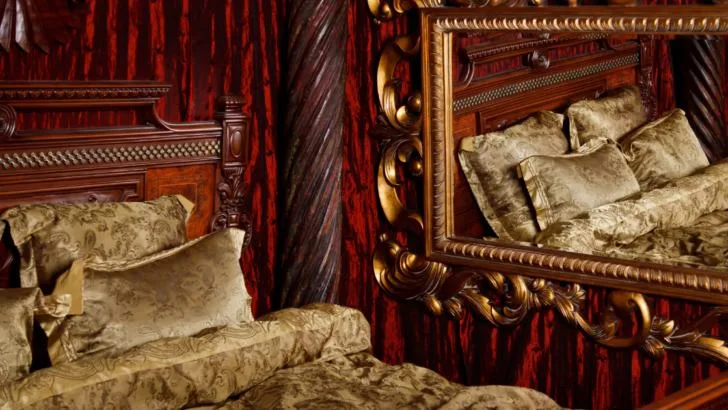
Art Deco Mirror Magic Transform Your Living Spaces
Yes, Art Deco mirrors can be used in many different locations around the house, depending on the specific design and style of the mirror. Art Deco design is known for its bold and eclectic style, which can add a touch of glamour and sophistication to any room in the house.
In the living room, an Art Deco mirror can be used as a statement piece above a fireplace or as part of a gallery wall. In the bedroom, an Art Deco mirror can be used as a dressing mirror or as part of a vanity setup. In the bathroom, an Art Deco mirror can be used above a sink or vanity, adding both functional and aesthetic value.
When choosing an Art Deco mirror for a specific location, it is important to consider the size and style of the space, as well as the specific design and aesthetic of the mirror. For example, a large and ornate Art Deco mirror might be best suited for a spacious living room, while a smaller and more understated mirror might be better suited for a bathroom or hallway.
Overall, Art Deco mirrors can be a versatile and stylish addition to a variety of spaces around the house, adding both functional and aesthetic value to the room.
Can you have an Art Deco Mirror in the bathroom?
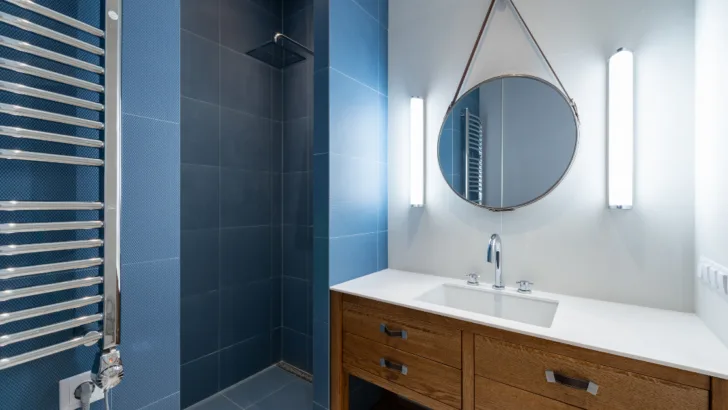
Captivating Art Deco Mirrors for Modern Living
Yes, Art Deco mirrors can be a great addition to bathrooms. Art Deco design often incorporates geometric shapes, metallic finishes, and bold colors, which can add a touch of glamour and sophistication to a bathroom space.
In the bathroom, an Art Deco mirror can be used above a sink or vanity, providing both functional and aesthetic value. The mirror can be a statement piece, with an ornate frame and intricate geometric patterns, or it can be more understated, with clean lines and a simple yet elegant design.
When choosing an Art Deco mirror for a bathroom, it is important to consider the size and style of the space, as well as the specific design and aesthetic of the mirror. It is also important to choose a mirror that is appropriate for the bathroom environment, with materials and finishes that can withstand moisture and humidity.
Overall, an Art Deco mirror can be a great way to elevate the style of a bathroom, adding a touch of vintage glamour and sophistication to the space.
Can you have a differently shaped Art Deco Mirror?
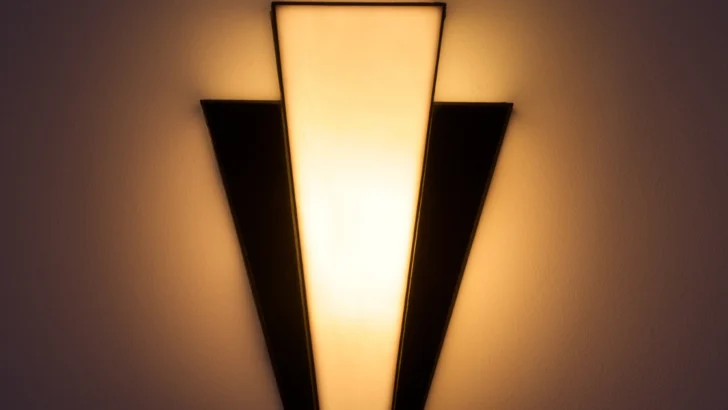
Classic meets Contemporary Art Deco Mirrors for Your Home
Yes, Art Deco mirrors can come in a variety of shapes, and the use of unique and unconventional shapes was a common design feature of the Art Deco era. While rectangular and oval shapes were common for Art Deco mirrors, other shapes like triangles, circles, and hexagons were also popular.
The use of unique shapes and geometric patterns was a defining feature of Art Deco design, and mirrors were often used to create visually striking and unique focal points within a room. Mirrors with unconventional shapes could be used to create interesting angles and reflections, adding depth and dimension to a space.
When choosing a unique shape for an Art Deco mirror, it is important to consider the overall aesthetic and style of the space, as well as the specific design and aesthetic of the mirror itself. A bold and unconventional mirror can be a great way to add a touch of vintage glamour and sophistication to a room, but it is important to ensure that it fits with the overall design scheme and does not overwhelm the space.
How to make an Art Deco Mirror?
Making an Art Deco mirror requires a combination of creativity, precision, and attention to detail. Here are some general steps to guide you in creating an Art Deco mirror:
- Choose a design: Research different Art Deco mirror designs and choose one that appeals to you. Consider the shape, size, and style of the mirror.
- Choose your materials: Art Deco mirrors are often made with high-quality materials such as glass, silver, bronze, or brass. Consider which materials you would like to use for your mirror.
- Prepare the mirror base: If you are starting with a plain mirror, use glass cleaner and a soft cloth to clean it thoroughly. Then, use a pencil and ruler to mark the areas where you want to add Art Deco elements.
- Add Art Deco elements: Art Deco mirrors often feature intricate designs and embellishments such as beveled edges, etched glass, and geometric patterns. Use a glass cutter or etching tool to add these elements to your mirror. You can also use materials such as silver or bronze to create additional decorative elements.
- Finishing touches: Once you have added all the desired elements, use fine-grit sandpaper to smooth any rough edges. Then, clean the mirror again with glass cleaner and a soft cloth.
- Mount the mirror: Finally, mount your Art Deco mirror on the wall or in a frame, and enjoy your stunning creation.
Note that making an Art Deco mirror requires some skill and expertise, so if you are not experienced in working with glass or metal, you may want to consider seeking help from a professional or taking a class to learn the necessary techniques.

Evoke Luxury with Art Deco Mirrors!
Is the Art Deco mirror timeless or dated?
An Art Deco mirror can be considered timeless in its design, as it continues to be popular and sought-after today. While Art Deco design emerged in the early 20th century, its emphasis on geometric shapes, bold colors, and sleek finishes has remained influential in design and architecture.
The unique and distinctive style of Art Deco mirrors can add a touch of glamour and sophistication to a variety of spaces, and they can be incorporated into both traditional and modern design schemes. While certain design elements may become dated over time, Art Deco mirrors are often considered to have a classic and enduring style that transcends trends.
That being said, the specific design and aesthetic of an Art Deco mirror can also impact its timelessness. Some Art Deco mirrors may have more intricate or ornate designs that can feel more dated, while others may have simpler and more understated designs that feel more timeless.
Overall, an Art Deco mirror can be a timeless and stylish addition to a variety of spaces, adding both functional and aesthetic value to a room.
Is an Art Deco Mirror vintage?
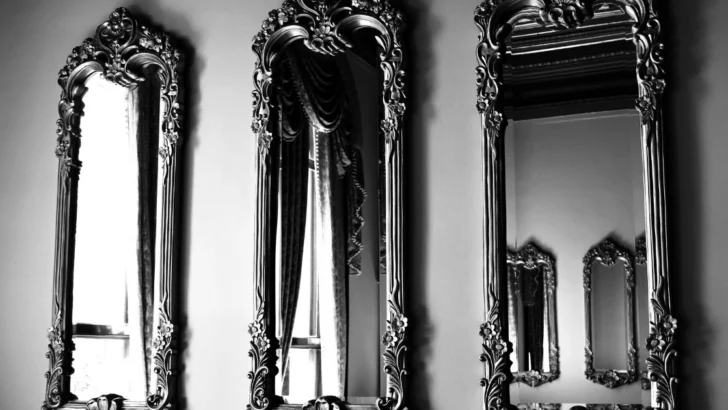
The Artistry of Reflection Art Deco Mirrors Shine Bright
An Art Deco mirror can be considered vintage, as the Art Deco era occurred from the 1920s to the 1930s. Vintage refers to items that are from a particular era or period, and Art Deco mirrors from this period can certainly be considered vintage.
In fact, Art Deco design is often associated with vintage style, and many people seek out vintage Art Deco mirrors as a way to add a touch of vintage glamour and sophistication to their homes.
However, it is important to note that not all Art Deco mirrors are vintage. Many designers and manufacturers today create new Art Deco-inspired mirrors that pay homage to the design aesthetic of the era. These mirrors may incorporate similar design elements, such as geometric shapes, metallic finishes, and bold colors, but they are not necessarily vintage.
Overall, while an Art Deco mirror can be considered vintage if it is from the Art Deco era, not all Art Deco mirrors are necessarily vintage.
Where to buy Art Deco Mirror?
There are many places where you can buy Art Deco mirrors, both in-person and online. Here are some options to consider:
-
Antique Shops: Dive into the past at antique shops and vintage boutiques, where you can discover authentic vintage Art Deco mirrors alongside other timeless treasures. Check here for the best 25 antique shops across the state.
-
Auctions: For those seeking unique and rare pieces, both live and online auctions provide opportunities to bid on coveted Art Deco mirrors, no matter where you are located.
-
Online Marketplaces: Explore popular online marketplaces like Etsy, eBay, and Chairish, where a diverse array of vintage and new Art Deco mirrors await. Enjoy the convenience of shopping from numerous sellers and access detailed item descriptions and photos.
-
Home Decor Retailers: Many home decor stores across the country feature Art Deco-inspired mirrors. While not authentic vintage, these mirrors beautifully capture the essence of the era and can infuse your space with Art Deco flair.
-
Custom Artisans: For a truly unique touch, collaborate with skilled custom artisans who can craft bespoke Art Deco mirrors tailored to your style and preferences.
Overall, there are many options for buying Art Deco mirrors, and it’s important to consider the quality, style, and authenticity of each piece before making a purchase.
How much will Art Deco Mirror cost?
The cost of an Art Deco mirror can vary widely depending on various factors such as its size, materials, condition, and whether it is an original vintage piece or a reproduction.
Vintage Art Deco mirrors can range in price from a few hundred pounds to tens of thousands of pounds depending on their rarity, condition, and provenance.
Newly-made Art Deco mirrors can be more affordable and range from around $100 for smaller, simpler designs to several thousand dollars for larger or more intricate designs made with high-quality materials.
The cost of an Art Deco mirror also depends on where you buy it. Antique stores and high-end galleries may charge more than online marketplaces or chain retailers.
Overall, the price of an Art Deco mirror can vary greatly, and it’s important to consider your budget and do some research before purchasing to ensure that you are getting a fair price for the quality and authenticity of the piece.
What is the takeaway opinion of interior designers and experts on Art Deco Mirror?


Bold yet striking Art Deco Mirror.
Overall, Art Deco mirrors are highly regarded by experts and interior designers for their unique and bold design elements that can add glamour and sophistication to any space.
Art Deco style is known for its geometric shapes, bold colors, and use of luxurious materials like glass, brass, and chrome. Art Deco mirrors often incorporate these design elements and can be statement pieces that instantly elevate the look of a room.
In addition to their aesthetic appeal, Art Deco mirrors are also valued for their historical significance and the craftsmanship that goes into creating them. Vintage Art Deco mirrors are often seen as rare and valuable collectibles that add character and authenticity to a space.
Overall, Art Deco mirrors are considered timeless and classic pieces that can add a touch of vintage glamour to any home and are often recommended by experts and interior designers as a way to incorporate Art Deco style into a space.
We hope you have enjoyed reading our blog about the reasons for adding an Art Deco Mirror around the house, If you’re looking for more inspiration for your home improvement projects, be sure to check out our home improvement blog. We offer a wide range of articles on various topics such as Grey Kitchen Tiles in kitchen remodels, Green Bathroom Tiles in bathroom renovations, and outdoor living spaces.
Our team of experts provides detailed information and tutorials on how to achieve the look you want, whether it’s a modern, traditional, or rustic style. Additionally, we also provide tips and tricks to help you save money, time, and energy during your renovation projects. So don’t hesitate, to visit our blog and start planning your next home improvement project today!
I hope this helps! Let me know if you have any other questions about Art Deco Mirror in the comments section below.

leonbet casino
Friday 15th of August 2025
LeonBet verbindet Gl�ck und Geschick auf hohem Niveau.
bitsrarz
Monday 4th of August 2025
This is really interesting, You’re a very skilled blogger. I’ve joined your feed and look forward to seeking more of your magnificent post. Also, I’ve shared your site in my social networks!
vavada casino mirror
Saturday 2nd of August 2025
Casino mirror restores full-site functionality in seconds.
aviator game download
Friday 1st of August 2025
Don�t miss a multiplier � grab your Aviator game download today.
casino mirror
Friday 1st of August 2025
No VPN? No problem � use a trusted casino mirror.